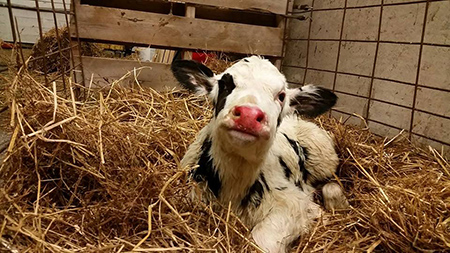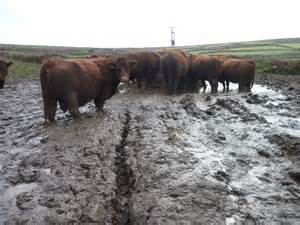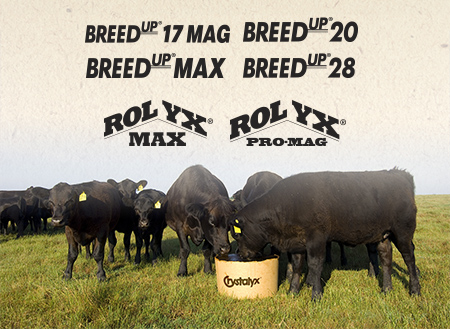I recently read an internet article written by Kris Ringwall from North Dakota State University that appeared on the Drovers Cattle Network, March 30th e-newsletter. In the article Dr. Ringwall, who oversees the CHAPS beef cow-calf record system with the University, talks about a reproductive measurement that is easy to remember and so critical to defining the profitability of a cow-calf operation. The number is “60%” and it is the percentage of cows that need to have calved in the first 21 day period of the calving season. This benchmark was established using cow herds enrolled in the ND Beef Cattle Improvement Associations database and herd records spanning 2009 to 2013.
Calving season is all the time on dairy farms
Spring is just busier and more crowded!
Managing the Spring rush is associated with calving season on beef cattle operations with spring calving herds. Many dairy farms will notice a seasonal increase in calving during the spring as well. Grazing dairies will calve in the spring to match the nutrient demand with the available forage. Traditional confinement operations often see an increase in spring calving for two reasons. Many operations do not calve first calf heifers in the coldest winter months. Increased spring calving of mature cows is often a result of heat stress. Cows that fail to conceive due to the heat of July and August will often become pregnant in September. These cows will enter the dry cow pens starting in March with subsequent calving in April through June. The net result is often an overcrowded situation in the dry cow, pre-fresh and fresh pens. Overcrowding in these pens leads to increased fresh cow problems after calving, most notably ketosis and uterine infections.
Don't let mud rob you of your profits
That wonderful time between winter and spring is affectionately known as mud season for many. Mud is a very real concern for cattle producers. Muddy cattle are more likely to experience cold stress, which increases energy requirements, costing you more money and reducing profits.
Mud contributes to cold stress by decreasing the insulating properties of hair. A dry, winter hair coat has separation between the individual hairs creating a protective pocket of warm air next to the body. Mud cakes the hairs together and removes this insulating layer of air. If the mud is wet, evaporative cooling makes the cold stress just that much worse. If cattle must lie in mud, they never get a chance to dry off and the cold stress continues.
CRYSTALYX after calving: Breed-Up products continued use
Nutritionist and feed professionals like to talk a lot about pre-calving nutrition, and stress the fact that a cow’s nutrient requirements climb in the last trimester of pregnancy. This is true and good body condition matters at this time in the reproductive cycle. Still, we may get a little too caught up in this message and overlook the period between calving and breeding; the post-partum interval. In the past several years, we’ve seen a great deal of success in using the CRYSTALYX® Breed-Up® products starting 1-2 months prior to calving. Calves hit the ground healthier and more vigorously, cows clean well and all is good for cow calf, and cowboy’s alike.
Change Is coming: Let better nutrition make you a winner
Saying that change is coming is about as earth shattering as saying the sun will rise again tomorrow.
Having traveled around the country a bit in the last month, I have had the chance to hear some reactions from beef producers and Allied Industry Associates on the upcoming Voluntary Removal of some antibiotics and/or antibiotic claims from feeds. Removing some antibiotics from feeds is certainly a change for us. The intent of the rule is to reduce the amount of antibiotics used in animal agriculture. You will still be able to use most antibiotics to treat or prevent diseases, but using antibiotics for claims to increase feed efficiency, or to increase rate of gain, will come to an end after December of 2016. Antibiotics in feed for prevention and treatment of diseases will remain available, but will require veterinarian oversight in the form of a Veterinary Feed Directive (VFD). If you wish to use allowed antibiotics in feeds in 2017, you will need to have a good working relationship with a veterinarian.



